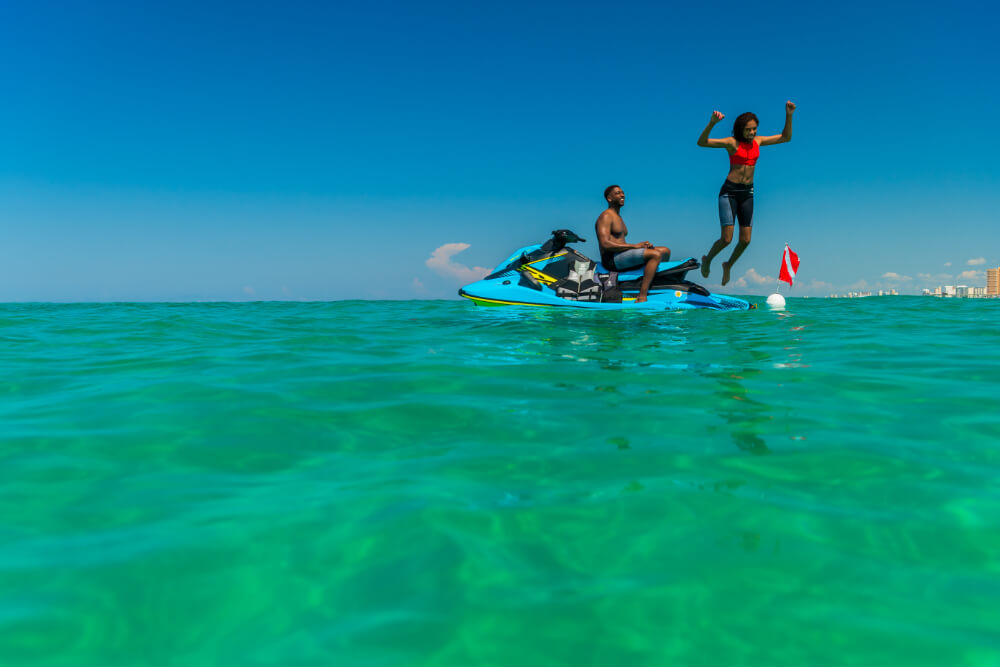YAMAHA EX MORE BANG FOR THE PWC BUCK
Yamaha’s EX Series Waverunners, fly in the face of what is considered “affordable”. The EX Series constitutes two machines in the Rec-Lite category that we had more fun on than should be allowed. With a starting price from $11,999 (inc gst) the features being offered are more than expected, but that’s not a surprise coming from Yamaha. They’ve been doing it for years.
Overview
Affordability comes in many forms. Sometimes it pretty much means “disposable” and other’s it means a bargain that is hard to resist. With Yamaha’s EX Series, the two models definitely fall into that latter category.
In fact during our performance evaluation of the EX Deluxe, we had more fun than on any of the company’s other machines, probably because this one focuses on exactly that… fun. Not speed, not bells and whistles, not seats made out of Panda… just fun, in its purest form.
For 2023 there are two models to the EX Series…. The basic EX, and the EX Deluxe, which is obviously the top of the line in this re-lite segment. Both are built on the same hull and simply add more features in succession to the Deluxe model.
Price Fixing?
One thing (of many) that separates Yamaha from the rest of the field is that the company builds watercraft, boats and WaveRunners alike, with stock features and no options are offered… per se. You can get options, but you have to get them in a different model.
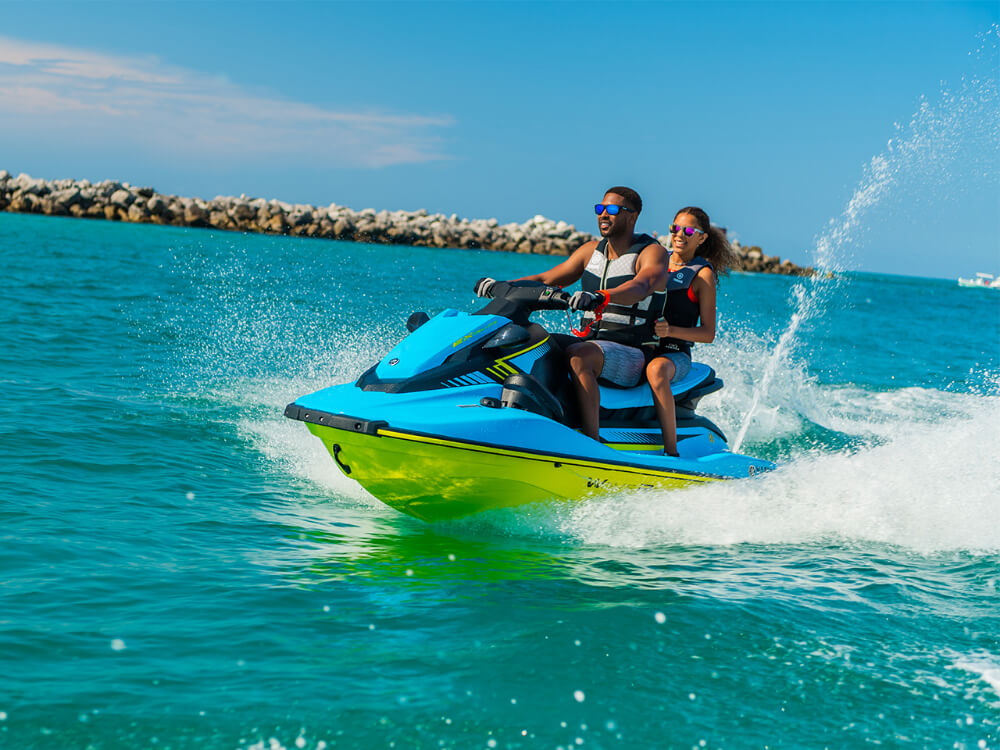
So as we move through the EX series of WaveRunners the difference between the two is separated only by the amount of “standard” features that each one has. The higher the price, the more features it has, all attached to the same hull with the same dimensions.
This is how Yamaha controls its pricing. All the machines are cookie cutter versions and there are no up-charges
Common Features to All
Both models are made from fiberglass. Not plastic. That’s a major feature right there and one that really serves to differentiate the EX models from the competition. The strength of the SMC (sheet moulded compound) build alone is worthy of a higher price tag, but here, it’s held down, mostly through the refined build process and the above mentioned fact that all come out the same. And with fiberglass construction these fun models will be in the family for years.
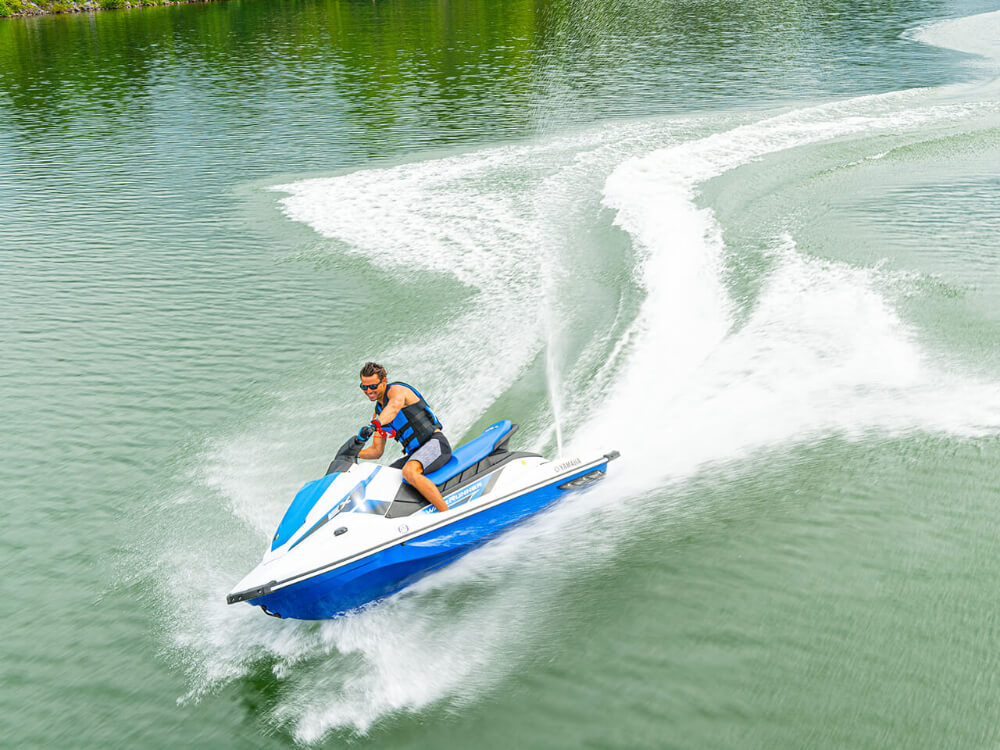
Fuel Efficient TR-1 Engine. This award-winning 3-cylinder, 4-stroke 1019cc engine is 40-percent smaller, 20-percent lighter and more fuel-efficient than its 4-cylinder M1 predecessor. All while putting out more power.
Because of this, the EX models are shorter, lighter and more affordable than any three-person, 4-stroke WaveRunner that Yamaha has produced in the past. The engine is drawing fuel from a 49.97 L tank, which is a significant increase over competing models in the Rec-Lite category. Best of all… the TR1 engines burns regular 91 octane fuel.
New Hull Design and Handling. Yamaha came up with a new hull design for the EX series that seems to be more forgiving and predictable in its handling characteristics. During our tests we found precise handling response and a stability that we did not expect. In fact, while evaluating its handling our test captain tried every move he could to get the EX to roll over and dump him in the water but it just wasn’t having any of it. By the time he was done, it was as if the WaveRunner sat there saying, “what else you got?” No matter what we did, the EX remained predictable, precise and fun. Did we mention fun?
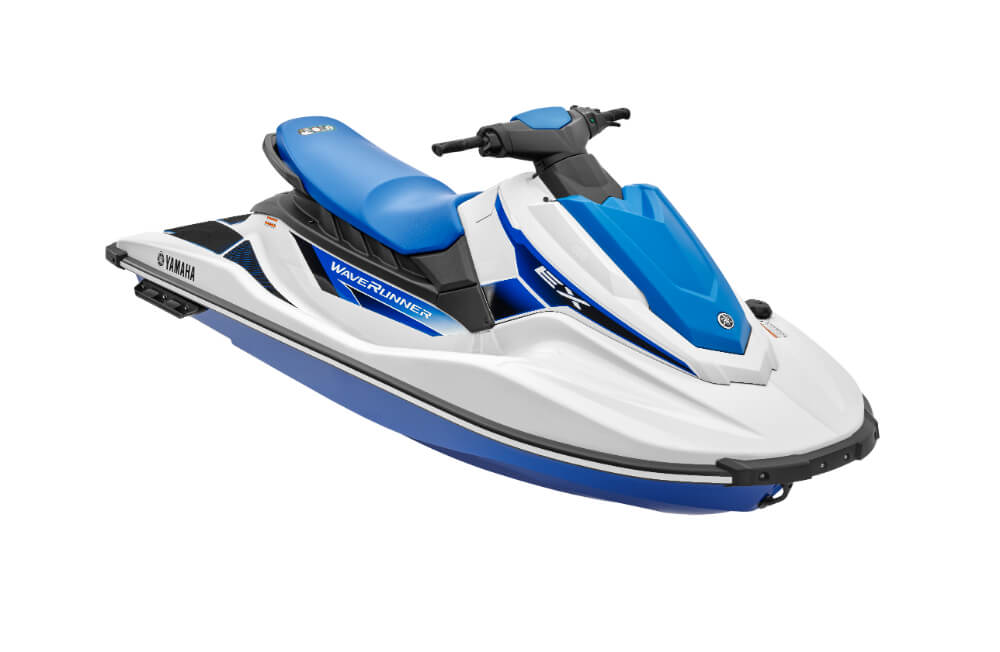
Was it still a wet ride? Of course it was. That’s part and parcel of what these watercraft are about. Getting wet and wild. If you want dry, get a boat. No one ever went to the waterfront restaurant in a suit and fancy dress while riding a personal watercraft. It’s not what these are made for. You wear a bathing suit and a floatation vest.
Storage capacity is 29.15 L in three separate compartments. The largest compartment is under the forward visor. It releases with a pair of rubber straps that hook onto a pair of back knobs.
The second, and most convenient, storage is just ahead of the driver and behind the handlebars. This is where the quick grab items go such as the drinks. Put the cellphone in a dry bag if it goes in here, or anywhere for that matter. None of these compartments are watertight.
The third storage is under the seat in two removable containers just above the engine. One of these, the forward one, holds the fire extinguisher.

True three-person capacity. This is a big feature and one that is optional on competing watercraft. Both the seat, and the EX models are large enough to hold three persons. Now that takes more than space, it takes floatation and stability as well. Sometimes adding a third person means adding an optional set of features, such as the bigger seat and larger rear deck for added floatation. At Yamaha, these models hold three people right out of the box.
A tow hook is included so that the EX models can all be used for watersports. This is a big feature since all three models carry three people so we can still tow while having a legally required observer onboard.
EX Deluxe Added Features
Mechanical Reverse. This is a convenience feature that increases the functionality of the EX Sport well above the base EX and it makes docking and manoeuvering much easier. A reverse lever is alongside the body of the WaveRunner, to the right. This means that we have to take our hand off the throttle to engage the reverse mechanism. This pull-lever is cable connected to a reverse bucket that drops down behind the jet exhaust to redirect the thrust forward, thereby backing the WaveRunner. Steering is reversed in this mode so to steer correctly, we continue to steer the bow, not the stern.
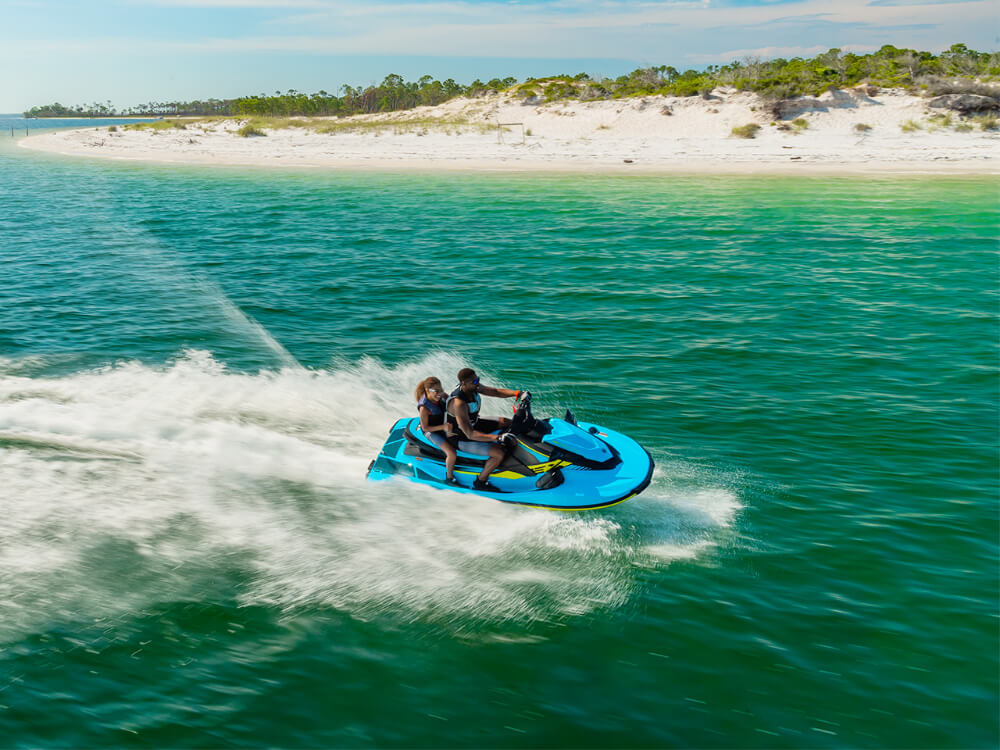
In addition the EX deluxe also adds a two-tone cut and sew seat. This may not seem like much but it does add a significant amount of class to the EX Deluxe. Metallic Paint Colours may be another feature that doesn’t really improve the ride or comfort but certainly ups the class level another notch.
R.i.D.E.
This is probably the most significant features of the EX Deluxe that makes it worth so much consideration. RiDE used to stand for Reverse with Intelligent Deceleration Electronics, but it has now evolved to much more than that, but the name stuck. The RiDE Technology in the EX Deluxe is controlled from the left trigger of the handlebars.
lor sit amet, consectetur adipiscing elit. Ut elit tellus, luctus nec ullamcorper mattis, pulvinar dapibus leo.

Reversing: The throttle is still on the right side, and probably always will be. Now, however, we add a trigger to the left side of the handlebar for the RiDE technology. Squeeze it and the EX Deluxe shifts (actually the reverse bucket drops down, there’s no shifting in jet watercraft) into reverse. Now we can manoeuver around the dock and even back off of the trailer or beach. Steering is reversed so when backing, we steer the bow, not the stern. So we have reverse with a trigger now… but as the saying goes… wait, there’s more.
Neutral: Just a quick squeeze of the left trigger drops the EX Deluxe into neutral. This is pretty intuitive. If we think of pulling the trigger back to back down the EX Deluxe, it’s just as easy to think of pulling the trigger back briefly as a means of stopping the forward motion, but not causing reverse motion.
Try it once and it clicks forever. Now again, there’s no shifting of gears going on here, the reverse bucket simply is dropping down just enough to deflect the thrust that is always coming out when the engine is running, down instead of forward or back. That keeps us from moving but turning the wheel will still cause us to pivot, rather than turn. Pretty neat.

Braking: When cruising at speed, squeeze the left trigger and intelligent braking kicks in. We say intelligent because imagine cruising at full speed 44.4 knots (51.1 mph) and hitting reverse. What would likely happen is the driver, and passengers would be launched over the handlebars, as both the reverse thrust and plunging bow would contribute to the resulting deceleration trauma.
Instead, when squeezing the RiDE trigger at full (or any) speed, the engine slows (regardless of how much we’re holding the throttle trigger) while simultaneously dropping the reverse bucket. Now we can stop the EX Deluxe in the shortest distance possible while still remaining onboard and in full control. We tried it over and over again and it worked flawlessly. Keep squeezing and the braking reverts to reversing.
Performance: With the TR-1 powering the EX models, Yamaha reports a top speed of 44.4 knots (51.1 mph) and a best cruise of 25.2 knots (29 mph) with a 12 litre fuel burn.


